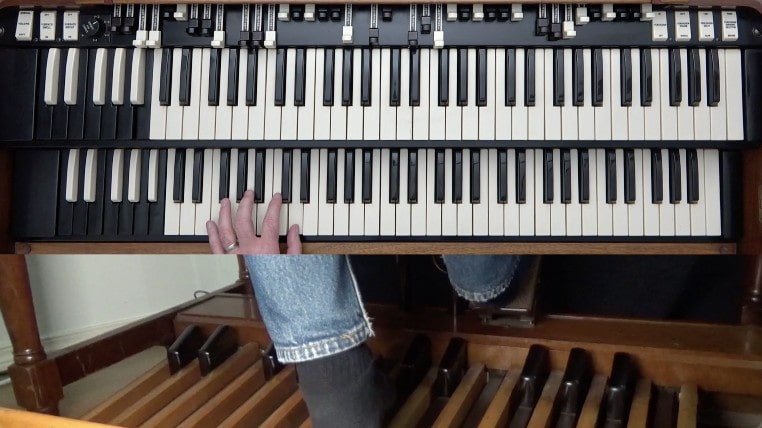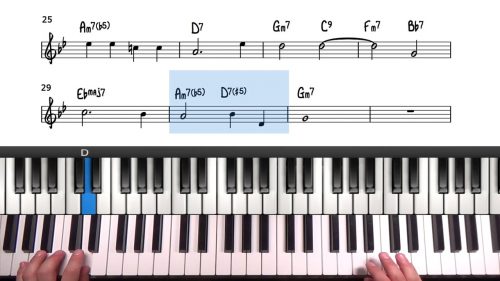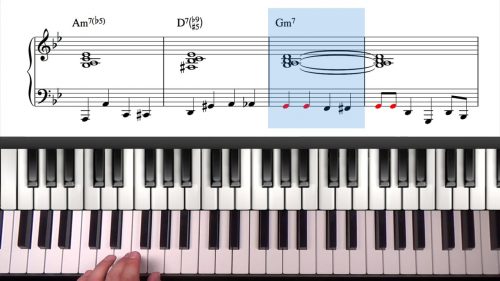The Lower Manual & The Pedals
For jazz organists, walking bass is played primarily with the left hand on the lower manual with some elements added and supported by the bass pedals.
Grace Notes & Ghost Notes
Walking bass on the lower manual gives us a greater ability to articulate notes than walking just with the bass pedals. When using the lower manual we can emphasise the triplet feel with grace notes and ghost notes to give our bass lines a stronger rhythmic foundation.
Bass Pedal Drawbar Settings
The 2 drawbars in the centre of the organ are used to control the volume and the sound of the bass pedals. The higher of the 2 drawbars is rarely used in jazz and you should set the bottom drawbar depending on the instrument, the room, and the setting.
As a rough guide, set the lower bass drawbar between 6 and 8 and use your ear to balance the volume of the pedals with volume of the lower manual.
Add Pitch-less Thumps
The pedal thump can be executed on 1 or 2 pedals using your ankle or your toe. The pedal thump is so short that a pitch is not established. Instead, we hear a very low frequency thump that is used to accent the beginning of the notes in our bass line.
Doubling Pitch With Pedals
We can use the bass pedals to double the pitch that we are playing on the lower manual. We do this when we want to reinforce and accent the approach to a particular chord change.
When playing the bass pedals on Hammond organ, we generally alternate between playing pitch-less thumps with following the melodic contour of the bass line that we are walking on the lower manual.
Lesson Downloads
-
Lower Manual Bass & Pedals Notation & Examples File Type: pdf
Practice Tips
-
To master the pitch-less thump, start slowly playing quarter notes with your feet whilst outlining a simple walking bass line on the lower manual.
-
Practice the 'heel and toe technique' to make it easier for you to outline chord changes on the pedal board. Moving up and down the pedal board can be a good warm up exercise.
-
Listening to the great organ players is an essential part of jazz organ education. Try to listen to what is different about each players approach to the bass.
-
Lots can be learnt from transcribing the bass lines of a great organist.
-
Some of the most notable figures in jazz organ were Groove Holmes, Jimmy Smith, Jimmy McGriff, Jack McDuff, Charles Earland, Shirley Scott.
-
More recent players include Tony Monaco, Larry Goldings, Joey DeFrancesco, Pat Bianchi, Mike LeDonne, Jared Gold, Brian Charette, and many others.









I play Hammond Organ, the XK-5. What I’d say about the organ, is that it is quite an infinite, unlimited instrument. First of all, having two manuals with independent tone controls, is an advanced instrument. It has double the surface area of a piano, with infinite many sound combinations. Next, the expression pedal, adds a rhythmic “breathing” element that can not be described only experienced. These elements alone, not even adding the leslie percussion etc., create an instrument that is beyond all others. I listen to mostly Jimmy Smith, Richard “Groove” Holmes, and Robert Walter. The instrument is so versatile that I’m not surprised each artist approaches it radically different.